
Masaki Tamura
出生 : 1939-01-26, Hirosaki, Aomori, Japan
死亡 : 2018-05-23
略歴
Masaki Tamura (たむら まさき, Tamura Masaki, 26 January 1939 – 23 May 2018) was a Japanese cinematographer.
Born in Aomori Prefecture, Tamura early on worked at Iwanami Productions (Iwanami Eiga), where. as an assistant, he helped photograph documentary films. He became a full-fledged cinematographer working on many of the documentaries of Shinsuke Ogawa. At the same time, he began photographing feature fiction films by directors such as Kazuo Kuroki, Yōichi Higashi, and Toshiya Fujita. He particularly became known for his collaborations with Mitsuo Yanagimachi. After working with many famous directors such as Juzo Itami, Sōgo Ishii, Gō Takamine, Kiyoshi Kurosawa, and Kaizō Hayashi, he began working in the 1990s with a new generation of directors, such as Nobuhiro Suwa, Naomi Kawase, and Makoto Satō. His collaborations with Shinji Aoyama were notable in his final years.
In 1982, he won the Mainichi Film Award for best cinematography for the film Farewell to the Land. The same year, he won the best cinematography award at the Yokohama Film Festival for Farewell to the Land and A Japanese Village - Furuyashikimura.
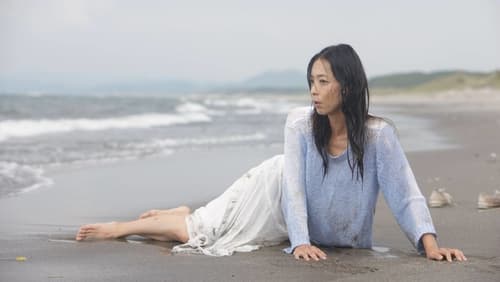
Cinematography
Ninomiya Azusa is a depressed elementary school teacher in Tokyo, who has problems both at work and in her personal life. One day, she suddenly hears a voice saying "If you go to Imore Island, you will get what you want.", so she decides to give it a try.
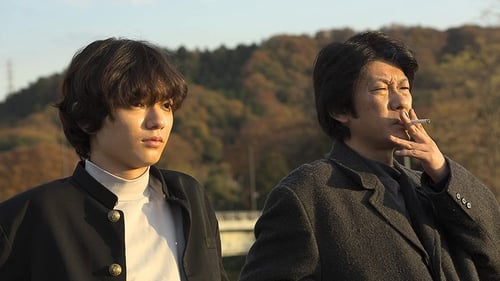
Director of Photography
Saki and Toshi were born and raised at the shabby "Drive in Gamo," located on the side of a road. Their father was a yakuza but he was kicked out of the group. Because of their father, Saki and Toshi were known as being part of the idiot family. Saki in desperation with her life became a troubled kid. She got pregnant and ran away from family. But one day, Saki who suffered from physical violence by her husband, comes back home.

Director
Saki and Toshi were born and raised at the shabby "Drive in Gamo," located on the side of a road. Their father was a yakuza but he was kicked out of the group. Because of their father, Saki and Toshi were known as being part of the idiot family. Saki in desperation with her life became a troubled kid. She got pregnant and ran away from family. But one day, Saki who suffered from physical violence by her husband, comes back home.
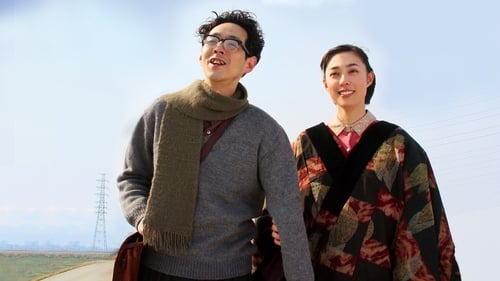
Director of Photography
良縁を願っていた29歳の布枝は、戦争で片腕を失った10歳年上の漫画家・茂とお見合いをすることに。お見合いから5日後には結婚式を挙げ、住み慣れた島根県安来から茂の暮らす東京へ出た布枝を待っていたのは、甘い新婚生活とは程遠い貧乏暮らしだった。布枝は戸惑いながらも結婚生活を始める。
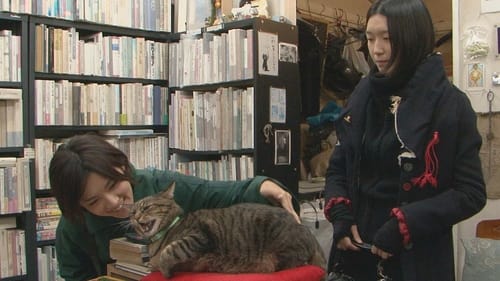
Director of Photography
Haru works at a part-time job for a bookstore. Her dream is to become an illustrator and she also loves cats. One day, after a cat named Chibutomu disappears from the bookstore Haru canvasses the neighbourhood in search of Chibutomu.
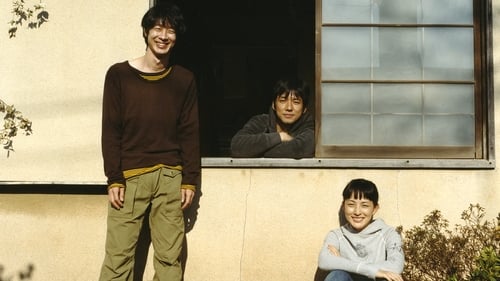
Director of Photography
A salaryman debates selling his grandfather's land to pay off his father's debt.

Director of Photography
"Shadow of Sand" - Set in Tokyo in the 1980's. Yukie, a young woman lives with the vision of the lover she has murdered. After his death he continues to appear in her room. Yukie maintains her usual life, trying to avoid discovery of her crime until a new lover turns up.
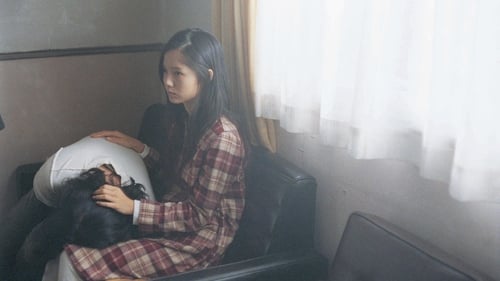
Director of Photography
Kenji Shiraishi is involved in the trafficking of illegal immigrants from China to Japan. One such case leaves an immigrant child to be an orphan. Instead of selling him along with others that arrived, Kenji flees with the boy to look after him and make an attempt at everyday life. The people after the boy, unexpected encounters with long-lost family members, and his vengeful nature are standing in the way of his future.

Camera Operator
"AA" is a documentary about Akira Aida (mostly known as Aquirax Aida), a japanese music critic who introduced free jazz, improvisation, and progressive rock to Japan. It's based on interviews with 12 critics and musicians who had connections with him. This is a documentary that considers the past, present and future of improvisation.

Director of Photography
Kaoru, a wealthy woman whose youth is fading, abandons the hustle and bustle of the city to live a peaceful life in a house on the coast. There she takes care of an old deaf, dumb and blind man as if he were an insect, a child or a pet. He can’t do anything for himself, so she feeds him and accompanies him on his walks. This strong mutual dependency offers Kaoru an escape from society and allows her to free herself from restrictions imposed by common sense.
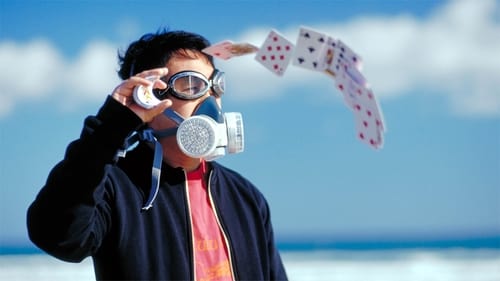
Director of Photography
A.D. 2015: A virus has been spreading in many cities worldwide. It is a suicidal disease and the virus is infected by pictures. People, once infected, come down with the disease, which leads to death. They have no way of fighting against this infection filled with fear and despair. The media calls the disease the "Lemming Syndrome".
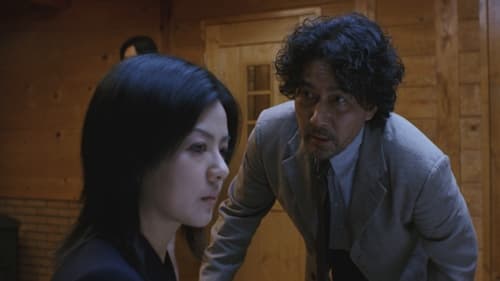
Director of Photography
湖畔の別荘に集まった3組の家族と塾の講師は、中学受験を控えた子供のために勉強合宿を行っていた。参加者の一組の並木俊介と美菜子は別居中だったが、受験のために、仲の良い夫婦を演じていた。そこへ俊介の愛人が現れ殺害される。
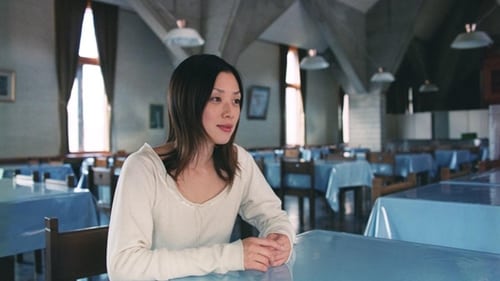
Director of Photography
Private detective Mike takes on an assignment to return a girl, who is set to marry into a prestigious family, from a mysterious commune in the forest.
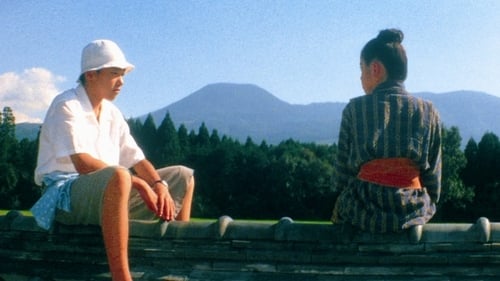
Director of Photography
Commencing well-respected Nippon director Kazuo Kuroki's sixth decade behind the camera, "A Boy's Summer in 1945" (literally "A Beautiful Summer in Kirishima") is a lyric, novelistic drama set in the countryside in the last days before Japan's surrender ending WWII. Striking a welcome retro note in its languid pacing and delicate handling of seriocomic ensemble threads, handsome production is a natural for fests. It might also prove a cornerstone for retrospectives or ancillary releases of works by a helmer ("Preparation of the Festival," "Ronin-gai") who's long been appreciated at home but has won just limited attention abroad.

Director of Photography
The ostensible subject of this film is the growing, drying, peeling and packaging of persimmons in the tiny Japanese village of Kaminoyama. The inhabitants explain that it is the perfect combination of earth, wind and rain that makes their village’s persimmons superior to those grown anywhere else, including the village just a few miles away. The film’s larger subject, however, is the disappearance of Japan’s traditional culture, the end of a centuries-old way of life.

Director of Photography
Kenji Nakagami, one of the most notable Japanese writers of the post-war, died in 1992. His work reveals a strong connection to his homeland, Kishu: a mountainous region that connects to the Pacific Ocean through a river. "To The Alley" (alternative title) is a documentary about Kenji's life. Incorporating 16 mm images from the writer's personal archive and adding new footage, director Shinji Aoyama travels through the paths of the life and art of the Japanese writer.

Director of Photography
A successful businessman and his alcoholic wife attempt to piece together their unhappy lives and shattered marriage. Little do Nagai and Akira know that their precarious relationship will soon be transformed by a stranger, the enigmatic Keechie.
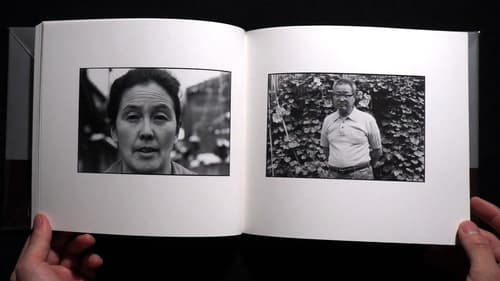
Director of Photography
In 1983, photographer Gocho Shigeo met an early death at the young age of 36. The view we see reflected in Gocho’s photographic images has become more profound over time since his death and has struck a chord in people’s hearts. While focusing on Gocho’s collection of photographs Self and Others, the film also visits places associated with him, creating a collage with the manuscripts, letters, photographs and voice recordings remaining in an attempt to capture “one more gesture”—a theme pursued by Gocho through photographic expression. This film is neither a critical biography nor a monograph on the photographer. Rather, we are offered a new perception. As if mesmerized, the photographs Gocho left behind captivate us in their gaze.

Director of Photography
「Helpless」の青山真治監督が、バスジャック事件で心に傷を負った人々の再生への旅を描いた人間ドラマ。2000年・第53回カンヌ国際映画祭で国際批評家連盟賞とエキュメニック賞を受賞した。九州の地方都市でバスジャック事件が発生し、多くの乗客が殺害された。生き残ったのは運転手の沢井と、中学生の直樹と小学生の梢の兄妹だけで、3人は心に深い傷を負う。2年後、家族を置いて消息を絶っていた沢井が町に戻ってくる。時を同じくして周辺で連続殺人事件が発生し、沢井に疑いの目が向けられる。そんな中、兄妹が2人だけで暮らしていることを知った沢井は、彼らの自宅を訪ね一緒に暮らし始める。さらに兄妹の従兄・秋彦も加わり、4人は沢井の運転するバスで旅に出るが……。沢井を役所広司、直樹と梢を実際の兄妹である宮崎将と宮崎あおいが演じた。2022年3月に青山真治監督が他界したことを受け、同年5月に追悼上映としてデジタル・マスター完全版を劇場公開。

Director of Photography
Rika, a bright, attractive, and driven young woman, is intent on marrying her dreamy boyfriend Seiichi Ono who is not only tall and handsome but also an up-and-coming executive. One day, Ono abruptly dumps her.

Director of Photography
Japanese drama set in a southern Kyushu island where dance-troupe leader Shinji (Shinji Arano) stays on as his touring troupe departs. After Shinji moves in with an old man (Nobuyoshi Tanigawa) cared for by his granddaughter (Reiko Matsuo), he becomes an apprentice to the old man's construction of a wooden boat
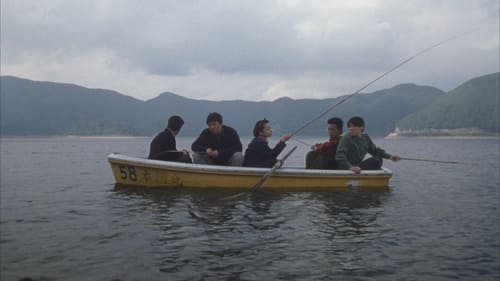
Director of Photography
殺された娘の復讐を果たした新島は、生きる目的を失い無為な日々を送っていた。そんなある日、再会した昔の同級生・岩松に殺しのビジネスに誘われる。殺しの仕事を始めるうち、新島は暴力の世界にはまっていく自分を感じる。しかし、やがて新島は重大な決断を迫られることになるのだった。
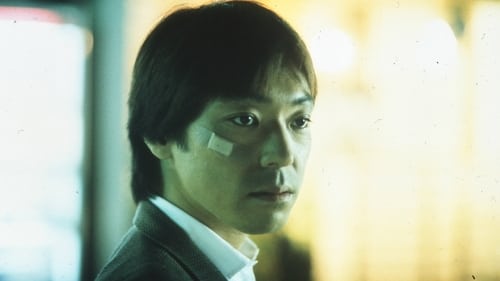
Director of Photography
小学生の娘を誘拐され、性的な暴行をされた上、殺された父・宮下。自らの手で犯人を突き止め、復讐を誓う。調べを進めるうち、謎の男・新島が宮下の復讐に手を貸すようになる。組織の幹部・大槻を拉致し強引に口を割らすと、組長・檜山の名を挙げた。
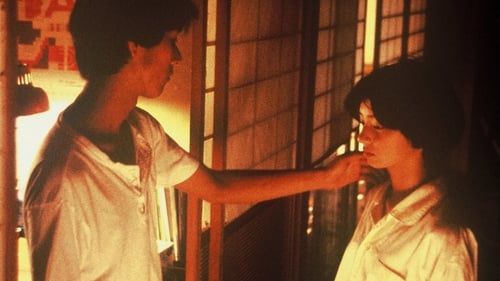
Director of Photography
奈良県南部の山間にある小さな村。この村に鉄道を通す計画が持ち上がって15年になるが、トンネル工事に携わっていた田村孝三は、計画の中止を知らされすっかり気力を失っていた。そしてある日、孝三は失踪してしまった。残された家族は戸惑いながらもそれぞれの選択をしていく。

Director of Photography
The slow collapse of the relationship between an out-of-work actor and his girlfriend.
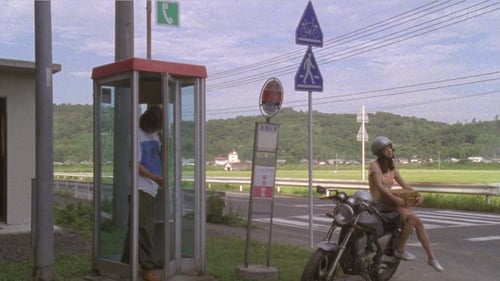
Director of Photography
Yasuo is a gangster just released from jail. Believing his boss double-crossed him, enraged Yasuo is on his way to find the boss. But before setting out for the dangerous trip, Yasuo asks Kenji to take care of his mentally challenged sister, Yuri, and a mysterious black bag.

Director of Photography
川の近くにある古びた家には、ピアノ講師の一太郎とその異母弟で無職のタケシ、そして二人の父の愛人の連れ子であるツグオの三人が暮らしていた。一週間後に取り壊しが決定しているその家に、いとこのサケ子が現れた。彼女はみんなの引越を手伝いに来たのだった。だがタケシに好意を抱いていたサケ子の登場は、タケシの恋人の玉子も巻き込んで、複雑な三角関係が交差する事態に発展してしまうのだった。

Director of Photography
Resulting pic blurs the line between documentary and fiction as Yanagimachi explores the lives of a couple of groups of peddlers, and they appear to act out their personal dramas for the camera.

Director of Photography
伝説の黄金の国ジパングを巡って、七つの刀を持つ無敵の男、地獄極楽丸の活躍を描く冒険活劇。とある古墳内より黄金の剣を盗み出した盗賊・地獄極楽丸。しかしその剣の正体は伝説の国・ジパングへの鍵となる物だった......。

Director of Photography

Director of Photography
A magical realist story of the legendary Okinawan hero Untamagiru participating in efforts to form an independent Okinawa before the island was returned to Japan in 1972.

Director of Photography
A talk-show hostess takes a camera crew out to an abandoned factory to investigate a purported snuff film that was made there. As she gets closer to the truth, she and her friends are subjected to a brutal nightmare.

Director of Photography
The movie compiles footage taken by Ogawa Production for a period of more than ten years after the collective moved to Magino village. Unique to this film are fictional reenactments of the history of the village in the sections titled "The Tale of Horikiri Goddess" and "The Origins of Itsutsudomoe Shrine". Ogawa combines all the techniques that were developed in his previous films to simultaneously express multiple layers of time—the temporality of rice growing and of human life, personal life histories, the history of the village, the time of the Gods, and new time created through theatrical reenactment—bring them into a unified whole. The faces of the Magino villagers appear in numerous roles transcending time and space—sometimes as individuals, sometimes as people who carry the history of the village in their memories, sometimes as storytellers reciting myths, and even as members of the crowd in the fictional sequences.

Director of Photography
熱海で工員、大山次郎が幼馴染の女性、山口アイ子を絞殺するという事件が起きた。大山の運命は、警視庁の名物刑事“くわえ煙草伝兵衛”こと二階堂部長刑事に委ねられる。伝兵衛は謹慎を解かれたばかりだが「大山の殺意を一級の文学作品に仕立ててみせる!」と相変わらずの見得をきる。彼をサポートするのは10年来の愛人で、明後日には他の男と結婚式を挙げる予定の水野朋子刑事と、富山県警から赴任して来た妾腹の弟である熊田留吉刑事。ただでさえ尋常でない伝兵衛の捜査室は怪しげな雰囲気に充ちている。そんなことは知らない大山の面倒を見るのは、女房殺して20年、一度だけ取り調べを受けたという牢名主の鬼島作二である。取り調べが開始されたが、注射器を持ってきてシャブ中毒にしようとしたり、伝兵衛のやり方はメチャクチャ。その上、わけのわからないヒステリー裁判長が乱入して来て暴れたり、挙句の果て、大山を置いて見場のいい過激派人質事件に三人揃ってしゃしゃり出て行ってしまう。また、熊田と妊娠中の愛人、美由紀の痴話喧嘩を無理矢理見学させられ、伝兵衛と水野の別れ話につきあわされたりと、ひどい目ばかり。水野の結婚式まで後6時間という早朝午前4時、最終取り調べが始まった。伝兵衛オリジナルの事件再現である。伝兵衛が机の引き出しに仕掛けられたスイッチを押すと、一瞬にして捜査室に事件当時の現場が現われる。水野が山口アイコに扮し、あの日の自分に戻った大山の告白が始まった。彼はソープランドのかぶせ屋におちたアイコに結婚を申し込んだが、彼女がふたりの神聖な想い出を汚すようなことを口走ったためカッとなったのだった。
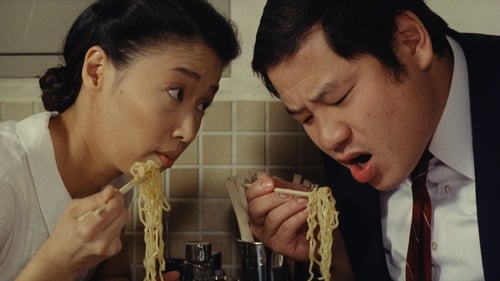
Director of Photography
長距離トラックの運転手、ゴローとガンがとあるさびれたラーメン屋に入ると、店主のタンポポが幼馴染の土建屋ビスケンにしつこく交際を迫られていたところだった。それを助けようしたゴローだが逆にやられてしまう。翌朝、タンポポに介抱されたゴローはラーメン屋の基本を手解きしタンポポに指導を求められる。そして次の日から「行列のできるラーメン屋」を目指し、厳しい修行を始める。

Director of Photography
Tatsuo, a reverent lumberjack, seeks to disrupt plans to build a marine park on his family land, instead promoting his traditions in reactionary ways.

Director of Photography
新興住宅地にトラックがやって来た。今日は小林家の引越しの日である。小心で生真面目、家族をこよなく愛する優しい父・小林勝国は、20年間のローンでようやく小さな庭付き一戸建て住宅を手に入れたのだ。母・冴子は、天真爛漫で底抜けに明るい女性だが、観葉植物を我が子のように可愛がるヘンな癖がある。東大をめざして浪人中の息子・正樹は、受験勉強がたたってかいつも異様に眼をギラつかせ、明けても暮れても暗記に没頭している。娘のエリカは、アイドルタレントを夢見て、常に演技のマネゴトに熱中している女の子。郊外で健康的かつ明るい家庭を築きあげるのが勝国の夢であり、新居の前に家族と共に立った時、彼の胸は充足感でいっぱいだった。翌日から、イソイソと健康器具等を買い込み、勝国は理想的な家族設計を実行に移して行く。ある日、勝国の兄の家を追い出された祖父・寿国が舞い込んで来た。頑健で愉快な寿国を最初は暖かくむかえる家族だったが、あまりの無遠慮かつ奔放な振る舞いに、次第に反感を覚えるようになる。また、一人増えたことで狭い団地住いの悪夢が甦ってきた。危惧した勝国は悩み抜いた末、この家に祖父の為の地下室を作る事を思いつき、スコップで、シャベルで、はたまた砕岩機まで買い込んで穴掘りに精を出し始めた。穴掘りも中盤にさしかかった頃、白蟻が現れた。せっかく手に入れた新居を白蟻に食いつぶされてたまるものかと、とり憑かれたように殺虫剤を撒き、灯油をぶっかける勝国。悪戦苦闘の末、ようやく白蟻を退治したが翌日、会社にいても白蟻の幻影が頭から離れない彼は会社を飛び出して家に取って返した。勝国は、今や完全に狂気のまなざしで砕岩機を振り回し、水道管を突き破った。家族の怒りが爆発し、くんずほぐれつの戦いが始まる。一軒家の中で激しい戦いが繰広げられたため、家屋が傷つき崩壊してしまった。一家はガード下で吹きさらしの生活を始めた。
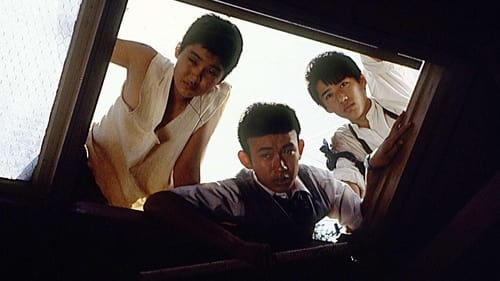
Director of Photography
ジョジョ、ブルース、辞書の中学生3人組は、ガキ大将のデブナガにいじめられてばかり。今日こそはデブナガに仕返しをしようと意気込む3人だったが、彼らの目の前でデブナガが誘拐されてしまう。そこから3人は覚醒剤絡みのヤクザ抗争に巻き込まれていき…。

Director of Photography
This is Ogawa Productions’ first major film from their Yamagata period. They had already started photography on Magino Village -A Tale but they were drawn to this village deep in the high country above Magino when a particularly cold bout of weather threatened crops. Inevitably, their attention strayed from the impact of weather and geography on the harvest to the “life history” of Furuyashiki Village. On the one hand, Ogawa returns to his roots by playing with the conventions of the science film. At the same time, he discovers a local, peripheral space in which to think about the nation and the state of village Japan. From this “distant perspective” in the very heart of the Japanese mountains, Ogawa discovers a village still dealing with the trauma of global warfare and struggling for survival as their children flee for the cities.

Director of Photography
予備校の中年講師の三村に弓子は秘かに瞳れていた。ひょんなことから親しく話をする機会があり、薄汚れた駅前の食堂で三村は「男には、自分の傘に女を入れてやりたい奴と、自分が女の傘に入りたい奴と二通りある。俺は入れて貰うほうだ」と弓子に話した。その夜、二人は酔いつぶれて三村の愛人の和子の部屋へ行った。弓子は和子に対して批判的な言葉を投げつけたが、三村に関る人がすべて傷ついていて、傷つきながらもそれぞれの愛を終らせようとはしていないことを知った。三村の家庭は妻の真知子が数年来ノイローゼで、表面的にはうまくいっているように見えたが、虚構の家だった。弓子は志望校の早稲田大学に合格し、三村から高価な家具や指輪をプレゼントされた。50年たったら結婚しようという三村の言葉を理解しようとしながらも、彼を愛したことから始まった行場のない淋しさに疲れ始めていた。ある日弓子は、一人旅から帰って来た和子と会っている三村にばったり会い、なごやかそうな二人の姿を見て動揺してしまう。妻の真知子に電話を入れる三村を、弓子は力なく見ているだけだった。そして、「もう大人のふりはおしまい。秩序正しい大人の世界を崩してしまいました」と三村に別れを告げた。

Director of Photography
農業と工業が、新旧渾然一体となってぶつかり合う郊外都市を舞台に、ある農家の崩壊を描く重厚な人間ドラマ。茨城県鹿島地方。田園地帯に押し寄せる工業群、その一角に小さな農家、山沢家がある。次男の明彦は東京で働いているため、一家を支えるのは長男の幸雄ただ一人。そんなある日、幸雄夫婦の最愛の息子二人が沼で溺死してしまう。孫を失い落胆する祖父と祖母、そして身重の妻。これを境に、幸雄の生活は狂い始める…。

Director of Photography
This rural documentary features poet Jin Makabe. Thoughts about agriculture, memories, landscapes.

Director of Photography
This biopic is centered on New Year's Day of 1894, when Kitamura is recovering from a suicide attempt. Japan is then under the spell of fervent patriotism because the government wants to build up public support for a war with China. Kitamura's literary friends and militant comrades come to visit. They wonder why Kitamura wants to kill himself. Kitamura at first refuses to receive them, then he sits down with them and looks back on his days as a civil rights militant, his stormy love life and his ardent but destructive desire to live literature to the full.

Director of Photography
In the mid-1970s, protests were waning across Japan after the Red Army scandal of Asama Cottage. In Sanrizuka, people were weary of the violence and the airport was well under construction. As for Ogawa Productions, they invited criticism by pulling out and moving to a quiet village in northern Japan. But when protesters back in Sanrizuka erected a tall tower at the end of one runway, they sent a crew to document what happened. This became the final film of the Sanrizuka Series.

Director of Photography
Omnibus about three actresses from different generations

Director of Photography
慶応3(1867)年11月13日。雨降る京都の街並みを走るひとりの男がいた。彼の名は、坂本龍馬。土佐藩を脱藩して海援隊を組織し、薩長同盟の斡旋にも尽力した彼の奔走のおかげで、ひと月前の10月14日、大政奉還がついに実現。日本の体制は大きく変わりつつあったが、それを快く思わない連中が、龍馬の命を付け狙っていた。龍馬の元の同志である陸援隊隊長・中岡慎太郎も、龍馬を自らの手で殺すかどうか、大いに悩む。

Director of Photography
小池一雄&上村一夫コンビによる同名劇画を、藤田敏八監督が鮮血飛び散る派手な演出でダイナミックに描いたバイオレンス・アクション。文明開化華やかな明治初期を舞台に、母から託された怨念をはらすために、修羅の道を歩く美貌の殺し屋・雪を描く。鬼才クエンティン・タランティーノ監督が『キル・ビル』でオマージュを捧げ、雪の庭園での決闘を見事に再現。ルーシー・リュー演じたオーレン・イシイはお雪がモデルだという。主演・梶芽衣子の魅力が光り、カルト的人気を誇る作品。

Director of Photography

Director of Photography
Shinsuke Ogawa documentary about the life of the farmers in Heta Village opposing their resettlement due to the construction of Narita Airport.

Director of Photography
The third film in Ogawa Productions’ Narita/Sanrizuka series of documentaries about the resistance by farmers and activists to the construction of the Narita Airport.

Director of Photography
It's the mid 60s. Tokyo needs a new airport. There isn't anywhere in Tokyo to put it, so the government decides on displacing some adjacent villages. The peasants of these villages are not having it. What results is a remarkable act of protest and civil disobedience.

Director of Photography
In 1968 the plan by the government to construct a new international airport in the fields of Sanrizuka near Tokyo unleashed one of the most important and enduring social upheavals in the history of postwar Japan. The plan sought to evict thousands of farmers from their lands without any sort of respect for the locals’ rights. Their resistance to eviction was met with extreme violence by the police. Activists from all over the country, including thousands of students, joined with the farmers in their mounting struggle. As the combats in Sanrizuka became more intense and the numbers of police increased, the collective became more involved in the fighting. Sanrizuka: The Three Day War was what Ogawa called a “bullet film”, an immediate and powerful piece of agitprop shot in three days and intended to be seen as quickly and widely as possible. Credit: ICA London

Director of Photography

Director of Photography
In 1968, Ogawa decided to form Ogawa Productions and locate it at the newly announced construction site of Narita International Airport in a district called Sanrizuka. Ogawa chose to locate his company in the most radical of the villages, Heta. Some farmers immediately sold their land; others vehemently protested and drew the support of social movements across the country. Together they clashed with riot police sent in to protect surveyors, who were plotting out the airport. Summer in Sanrizuka is a messy film – its chaos communicating the passions and actions on the ground.

































